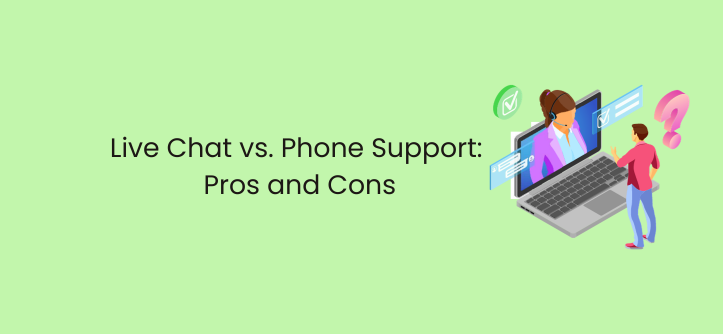
Damilola Oyetunji
Content Writer at Chatway.
Quickly respond to customer and visitor inquiries via live chat
Personalize the chat widget to match your business's style and branding
Stay updated on all incoming messages with email and push notifications
Improve the way your team works with chat assignments and private notes
Provide support on the go with Chatway's mobile apps for iOS and Android devices
Categorize and label conversations using specific criteria for personalized support
Interact with visitors in their preferred language, supporting 20+ languages
Use Chatway live chat on multiple platforms such as Shopify, Wix, Duda etc
Get insights into your support activities to better understand customer interactions
Centralize chats from Messenger and email into a single dashboard
Customer Service,Live Chat,Support - 7 Mins READ
Content Writer at Chatway.

In the past, connecting with customers was limited to one option: phone support. However, with advancements in technology, businesses now have alternative communication channels such as live chat. While phone calls remain efficient, many customers prefer the flexibility and ease of live chat. So, which customer support channel should your business adopt? In this article, we’ll explore the pros and cons of each to help you make an informed decision.

Live chat support is a text-based communication method that enables real-time conversations between customers and support agents. Here are the pros of using live chat support:
While live chat support offers numerous benefits, it’s essential to acknowledge and address the disadvantages or cons associated with this communication method.
1. Limited Emotional Connection:
One notable disadvantage of live chat support is the limited emotional connection between customers and support agents. Unlike phone support, where the tone of voice and nuances in speech can convey empathy and understanding, live chat relies solely on text. This can make establishing a solid emotional connection challenging, potentially leaving customers feeling detached or unappreciated.
Mitigation Strategy:
2. Language and Communication Barriers:
Language differences and communication barriers can pose challenges in live chat support. Customers and support agents may have varying proficiency levels in language, leading to misunderstandings or misinterpretations.
Mitigation Strategy:
3. Over-Reliance on Written Communication:
Live chat relies heavily on written communication, which can be both an advantage and a disadvantage. While it allows for a detailed record of conversations, some issues may require more nuanced or lengthy explanations that could be more challenging to convey effectively through text.
Mitigation Strategy:
By acknowledging these cons of live chat support and implementing the suggested mitigation strategies, businesses can create a more balanced and effective customer support system.

Phone support, or telephone support, is a customer service approach that facilitates real-time, voice-based interactions between customers and support agents. These interactions occur via telephone calls, allowing for direct verbal communication.
Phone support’s strengths are its ability to provide personalized, immediate, and empathetic interactions. Customers appreciate the human touch and the reassurance from speaking directly to a support agent. However, it’s essential to acknowledge that phone support has limitations, including potential wait times and restricted availability.

One of the drawbacks of phone support is the potential for extended wait times and call queues. Customers may wait on hold for an extended period before reaching a support agent, leading to frustration and a less-than-ideal customer experience.
Mitigation Strategy:
Phone support often operates within set business hours, which may not align with customers’ schedules. This limitation can leave customers without assistance during evenings, weekends, or holidays.
Mitigation Strategy:
Phone support relies heavily on verbal communication, sometimes leading to misunderstandings or miscommunications. Differences in accents, language proficiency, or background noise can hinder effective interaction.
Mitigation Strategy:
By acknowledging and proactively addressing these cons of phone support, businesses can optimize their phone support services and provide a more satisfactory customer experience. Implementing strategies to reduce wait times, extend availability, and improve communication can help mitigate these challenges, ensuring that customers receive the support they need promptly and effectively.
When choosing between live chat and phone support it’s important to consider several factors such as your target audience, the complexity of the issues you handle, and your budget. One approach is to offer both options to cater to diverse customer preferences. Some businesses even adopt a hybrid approach, utilizing live chat for quick inquiries and phone support for more complex issues.
Keep in mind that flexibility and adaptability play a significant role in providing exceptional customer support. If you choose real-time text-based communication with live chat or the personalized touch of phone support, addressing the strengths and mitigating the weaknesses can help you create a balanced and effective customer support system.

Content Writer at Chatway.

Content Writer at Chatway.

Content Writer at Chatway.